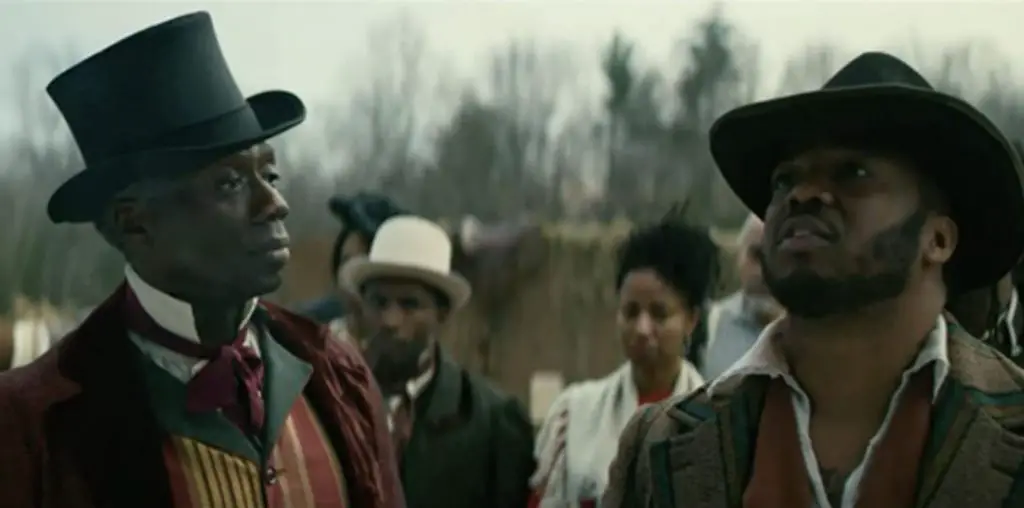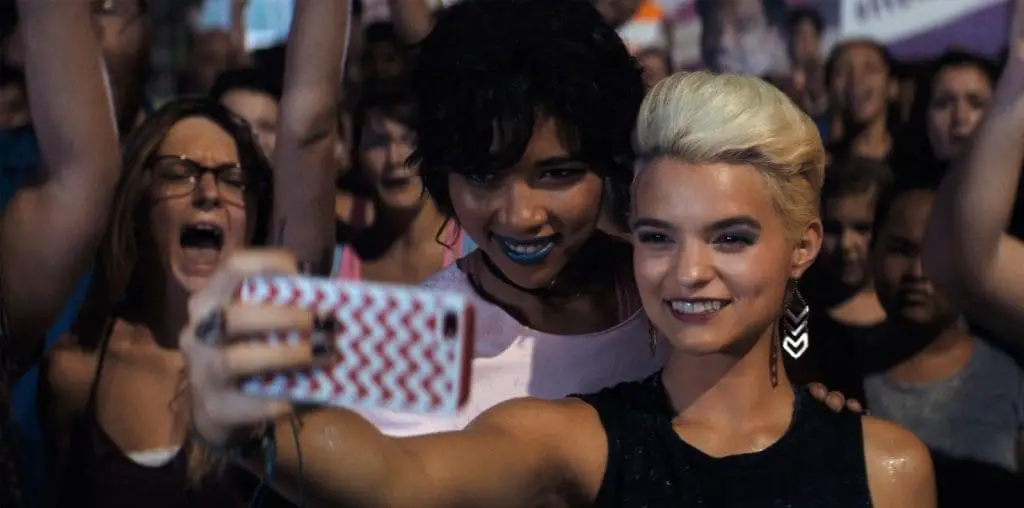
As my readership – composed almost entirely of unemployed filmmakers who spend too much time on this website – would acknowledge, this has been a very shitty year. Average Joes lose their homes so a few jerks on Wall Street can buy bigger yachts. Even the Democrats are sharpening their knives to gut Social Security and Medicare. However, the U.S. of A. being the land of innovation, I have a modest proposal to cure society of its economic woes.
Unless you happen to be an international fugitive with sporadic Internet access, I will assume the reader has a passing familiarity with the Casey Anthony trial. The case has been the most entertaining piece of Reality TV since OJ. More people flew to Orlando to see the trial than to visit Disneyworld. Accordingly, the Florida state legislature has only itself to blame for its multi-billion deficit. They blew the financial opportunity of a lifetime.
People waited overnight in lawn chairs to get inside that courtroom. Many had traveled from thousands of miles away. Fistfights broke out between spectators whenever someone tried to cut in line. Can you imagine how much a scalped ticket would have cost for that freak show? F**k Lady Gaga. Trailer trash murder trials are the future of the entertainment industry. But miserable bureaucrats that they were, the Ninth Judicial Circuit never charged admission. No wonder Florida won’t have high-speed rail until 2096.
In the name of the public interest, I have drafted a list of proposed changes for future high-profile criminal cases. The government owes its citizenry more than the swift and fair administration of justice. It should be obligated to maximize the entertainment value of its courtroom proceedings.
1. Licensing
The Olympics charges networks hundreds of millions of dollars for broadcasting its sporting events. Nancy Grace can cough up a little dough as well. There is no constitutional guarantee that trials have to be televised any more than football games need to be covered by ESPN. If HLN wants to shoot the courtroom action, let them pay.
Also, let’s not dismiss sponsorship opportunities out of hand. Yes, a multinational corporation may not want its brand associated with the murder of a little girl. On the other hand, that sponsorship s**t never made much sense to me anyway. Remember how Snickers was the “official candy bar” of the 1992 Olympics? Did they expect us to believe that gold-medal athletes scarfed down Snickers bars before running marathons?
 Maybe the tattoo parlor that inked “Bella Vita” on Casey’s shoulder could sponsor the trial. (As an aside, I think Anthony should receive a misdemeanor conviction for cultural ignorance. First of all, her tattoo displays appalling grammar. A definite article [“La” as in “La Bella Vita”] must precede the noun in the original Italian phrase. Secondly, “La Dolce Vita” would be a more tasteful translation of “The Good Life” with its Fellini-esque undertones. Thirdly, the font is clichéd and unbearably tacky.) Or, better yet, a tie-in with a psychiatric counseling firm for dysfunctional families could be a great marketing opportunity. During commercial breaks on Nancy Grace, they could advertise a $99 “Casey Anthony” special for initial consultations.
Maybe the tattoo parlor that inked “Bella Vita” on Casey’s shoulder could sponsor the trial. (As an aside, I think Anthony should receive a misdemeanor conviction for cultural ignorance. First of all, her tattoo displays appalling grammar. A definite article [“La” as in “La Bella Vita”] must precede the noun in the original Italian phrase. Secondly, “La Dolce Vita” would be a more tasteful translation of “The Good Life” with its Fellini-esque undertones. Thirdly, the font is clichéd and unbearably tacky.) Or, better yet, a tie-in with a psychiatric counseling firm for dysfunctional families could be a great marketing opportunity. During commercial breaks on Nancy Grace, they could advertise a $99 “Casey Anthony” special for initial consultations.
2. Seating
Most courtrooms have wooden pew-style benches just like in a church. Legal experts refer to this area as “the gallery.” While the judge gets to park his a*s on a nice comfy office chair, spectators occupy the barristerial bleachers. After waiting all night for a seat in the courtroom, imagine sitting for eight hours upon a hardwood bench.
I believe the vast disparities of seating quality in the courtroom may violate our Constitution’s Equal Protection Clause. Spectators should enjoy the same protection from the hemorrhoidal consequences of uncomfortable seating as do officials of the court. Standard home theater seating would be adequate to remediate this glaring inequality.
Then we must address the issue of the limited number of seats. Surely, no promoter would book a Rolling Stones concert in the back room of a dive bar. So why did the court choose such a miniscule venue for the trial of the century? In the future, courtroom architects will need to design stadium seating for spectators. Accordingly, PA systems and Jumbotron video screens will be required for those who can’t afford “courtside” seats. Otherwise, they will not be able to follow the action in the well.
3. Food
One of the major drawbacks of attending a trial is the lack of dining options during lunchtime recess. I have yet to find a cafeteria in either a state or federal courthouse that serves palatable cuisine. In particular, the rubbery lime Jell-o at most government facilities should be classified by The Hague as a crime against humanity. Worse yet, spectators are not allowed to bring food into the courtroom so a bag lunch would be grounds for contempt.
In an ideal justice system, court-appointed vendors should be able to sell food in the aisles of the gallery just like in a ballpark: “Red hots! Get yer red hots! Only 25¢!” Of course, I do recognize this activity might be disruptive to judicial proceedings. However, a concession stand outside the courtroom with popcorn and other delicious treats would be a reasonable compromise. With record levels of unemployment, think of how many jobs would be created by this minor innovation!
4. Scheduling
One of the most frustrating issues for court watchers involves attending the trial at its most dramatic moments. For instance, the cross-examination of a star witness will be much more exciting than a few technical rulings. How would you like buying a ticket to a Madonna concert and then watching her backup band tune their instruments for several hours? Such was the daily risk of cueing in line overnight for the Casey Anthony trial.
Worse yet, the judge can adjourn the court for the day without prior notice or justifiable cause. Maybe, he has a 4pm tee-time at the golf club. Who knows? For that reason, the bailiffs should maintain printed and online schedules of all courtroom events. Also, admission prices can be raised for the really sexy stuff. For instance, the audience will be willing to pay a lot more to watch Casey’s brother break down in tears on the stand than hear a bunch of DNA mumbo-jumbo by a forensics geek from FSU.
Another problem with court watching involves keeping track of a trial’s complex storyline. Unless you watch the case from start to finish, it can get confusing. Would you walk into a movie thirty minutes after showtime? I suggest courts adopt a narrative technique used in many popular soap operas. Before the court comes into session each morning, the Jumbotron (mentioned in section 2) should display highlights from the previous day. And to keep the audience interested in the case, a “sneak preview” of what will happen tomorrow should be screened after court is adjourned.
5. The Jury
The low-point for most viewers who followed the Casey Anthony Trial was the verdict. Instead of getting a hot date with Old Sparky, the defendant walked and will be living the “Bella Vita” after selling the life-rights to her story. Besides the miscarriage of justice, it’s like a popular TV series that gets cancelled. Who doesn’t want Season Six of “The Wire”? Sadly, the show is over. Audiences won’t have a chance to watch the appeals, fresh breaks in the case, surprise witnesses, and the climactic death watch. The lack of closure leaves a bitter taste in the public’s mouth.
The obvious culprit is the jury. In high-profile trials, jury selection entails finding twelve people without any pre-existing bias. Excluding people who are retarded or in a late stage of Alzheimer’s, how the hell do you find a dozen individuals without an opinion about O.J. Simpson? They are either incredibly stupid or, worse, clever enough to sneak through voir dire undetected.
 Rather than wring our hands over these 12 schnooks, we can leverage the vox populi into a powerful revenue stream. If we truly live in a democratic society, let’s handle this grave decision like our country’s greatest institution – American Idol. In that competition, the audience can vote by phone or text message for their favorite singing contestant. Likewise, after closing arguments, people should be able to vote on the verdict. The court will allow a 24-hour window for voting so we won’t get bored with a sequestered jury that bickers amongst themselves for weeks on end.
Rather than wring our hands over these 12 schnooks, we can leverage the vox populi into a powerful revenue stream. If we truly live in a democratic society, let’s handle this grave decision like our country’s greatest institution – American Idol. In that competition, the audience can vote by phone or text message for their favorite singing contestant. Likewise, after closing arguments, people should be able to vote on the verdict. The court will allow a 24-hour window for voting so we won’t get bored with a sequestered jury that bickers amongst themselves for weeks on end.
Obviously, this system could be abused. A crank with a power dialer could vote “guilty” thousands of times and distort the results. But here’s the best part! The court will charge callers $4.95 per vote. That’s an affordable sum but large enough to dissuade cheaters. If several million people cast a vote, the State of Florida will make a bundle. The government can keep the trains running on time without raising taxes or cutting critical social programs. I can’t think of a more bipartisan solution to our budgetary woes.
So, write your Congressmen. And be sure to mention J.X. still has incriminating photos of them if they don’t play ball.


The scary part about this post is that you know there is some pig agent out here that is trying to figure out a way to make this happen.
JX. So many good ideas in one column! Why aren’t you in Washington fixing the economy?